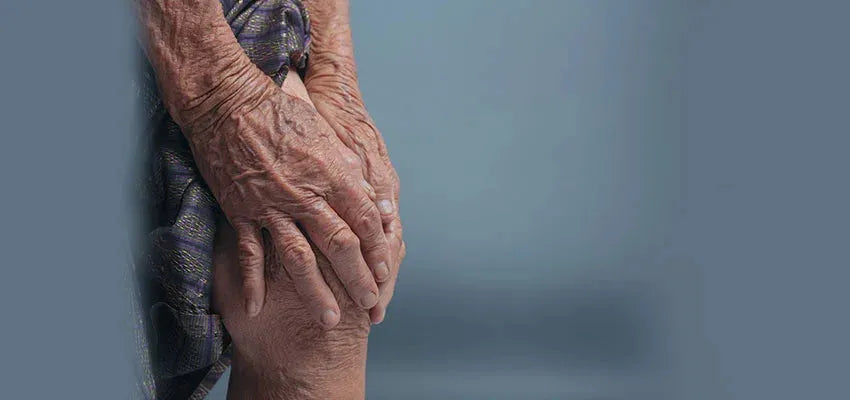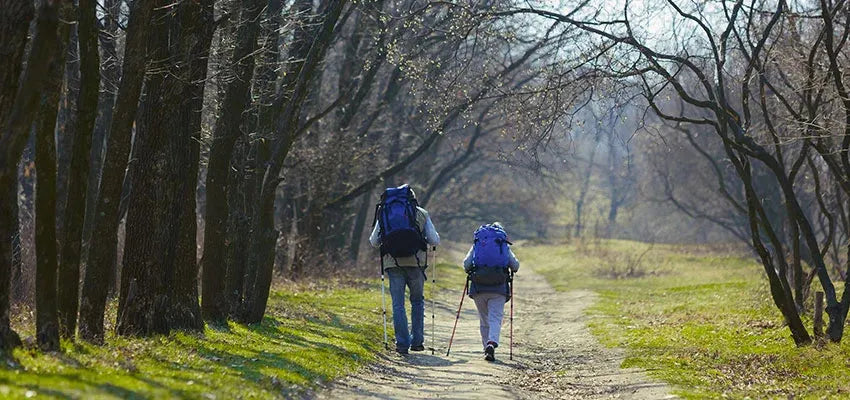
Muscle loss with age, why?
Your muscles grow in size and get stronger from the time you're born until about the time you turn 30. However, in your 30s you start to lose muscle mass and function. After the age of 30, physically inactive people can lose up to 5% of their muscle mass each decade. Even if you are physically active, you will still lose some muscle mass. This happens due to sarcopenia.
Sarcopenia, a term derived from the Greek words for flesh (sarcos) and loss (penia) is used to describe the age-related loss of muscle mass. This condition causes reduced muscle function, loss of muscle strength, and power. Sarcopenia is a type of muscle atrophy that is primarily brought about by the natural aging process. Inactivity and poor diet may also contribute to this condition.
Sarcopenia often starts to develop more quickly around the age of 75. This condition, increases the likelihood of falls and fractures in older adults.
What are muscles?
Muscle is a soft tissue. Numerous elastic fibers make up your muscles. The human body has roughly 600 muscles. Different types of muscles perform various functions like breathing, running, jumping, digesting food, etc.
Our muscles are fueled by glucose derived from the carbohydrates in our diet. Muscle tissue also requires electrolytes, specific minerals, and other dietary components like calcium, sodium, magnesium, and potassium to function properly.
Muscle function can be impacted by a wide range of diseases. These ailments may result in muscle aches, spasms, or weakness. Certain serious conditions may also lead to paralysis.
Types of muscles in the body
Movement is caused when the muscles either contract or relax. This movement may be unconscious (in which case it is involuntary) or conscious (in which case it is voluntary).
In the body, there are three different types of muscle tissue including:
Skeletal muscle: This is the specialized tissue that connects to bones and allows movement. The musculoskeletal system or the locomotor system, comprises of skeletal muscles and bones. Skeletal muscles are voluntary muscles as they can be controlled at our will. They are also known as "striated muscles" because the tissue appears to have striations under a microscope. Skeletal muscles are used for all consciously performed actions like running, chewing, and writing.
Smooth muscle: This muscle is located in a variety of internal organs, including the uterus, the gastrointestinal tract, and blood vessels like the arteries. Layers of smooth muscle are arranged along the length of the structure, and they contract in waves. Since smooth muscle moves without our conscious awareness, it is also known as involuntary muscle.
Cardiac muscle: This is an involuntary muscle that lines the walls of the heart. They help your heart in pumping blood throughout your body.
Muscle changes due to aging
As we age, our muscles become smaller and weaker, which can lead to fatigue and decreased exercise tolerance. This is brought about by a number of interrelated factors. Some of these are as follows:
- There is a decline in the number and size of muscle fibers. Therefore, muscle response is slower in our 50s than it was in our 20s.
- Loss of muscle tissue occurs as a result of aging, due to which the muscle tissue gets replaced with a fibrous, tough tissue.
- Muscle tone and contraction capacity are decreased as a result of changes to the nervous system.
- Tendons, the cord-like tissues that join muscles to bones, lose their water content as we get older. Hence, the tissues stiffen and lose their capacity to withstand stress.
- As hand grip strength declines, simple tasks like opening a jar or turning a key becomes more challenging.
- It becomes harder for the heart muscle to quickly pump large volumes of blood throughout the body. We lose energy faster and the recovery becomes much slower as we age.
- The rate at which the body breaks down food into energy (metabolic rate) slows down. This may lead to obesity and a rise in "bad" cholesterol levels.
Causes of muscle loss due to aging
Loss of muscle mass causes varying degrees of impairment such as slower movement and loss of balance, limiting one's ability to carry out daily tasks with ease. Additionally, sarcopenia is also associated with inflammation, insulin resistance, and chronic diseases like type 2 diabetes, heart disease, and pulmonary disease.
A person's body goes through certain changes as they age that may contribute to the development of sarcopenia. These changes include:
Hormonal changes: The natural decline of hormones like growth hormone, testosterone, and insulin-like growth factor (IGF-1) that help to promote protein synthesis and muscle growth may cause sarcopenia.
Diet changes: In order to gain muscle mass, your diet is also important. Protein is converted by the body into amino acids, which is then utilized for muscle growth.
However, with increasing age, people start to experience a phenomenon called anabolic resistance. This reduces the body's capacity to breakdown and synthesize protein. A decrease in protein synthesis results in smaller and weaker muscle mass.
Not consuming enough protein or calories daily to maintain muscle mass could potentially result in sarcopenia.
Eating insufficient amount of vegetables and fruits, as well as consuming excessive amount of grains and processed meals, can both have a negative impact on muscle mass.
Nervous system changes: Decrease in the nerve cells that transmit signals from the brain to the muscles to initiate movement could also lead to the development of sarcopenia.
Symptoms of sarcopenia
Muscle weakness is the most common symptom of sarcopenia. Other symptoms include:
- Loss of stamina
- Difficulty carrying out everyday tasks
- Walking slowly
- Having trouble climbing the stairs
- Poor balance and frequent falls
- Reduction in muscle size
As we age, our muscles lose their tone (tension in relaxed muscle) and ability to contract due to the normal aging process of the nervous system and changes in muscle tissue. Loss of muscle strength makes it more difficult for you to deal with and recover from an injury or illness. Loss of muscular mass can also cause risky falls that can lead to injury or even death.
Seniors should seek expert consultation and get tested for muscle loss, if they appear frail and sustain any fall or fractures. Elderly people's risk for muscle loss can be significantly reduced by incorporating lifestyle changes like heathy diet and physical activity (strength training).


